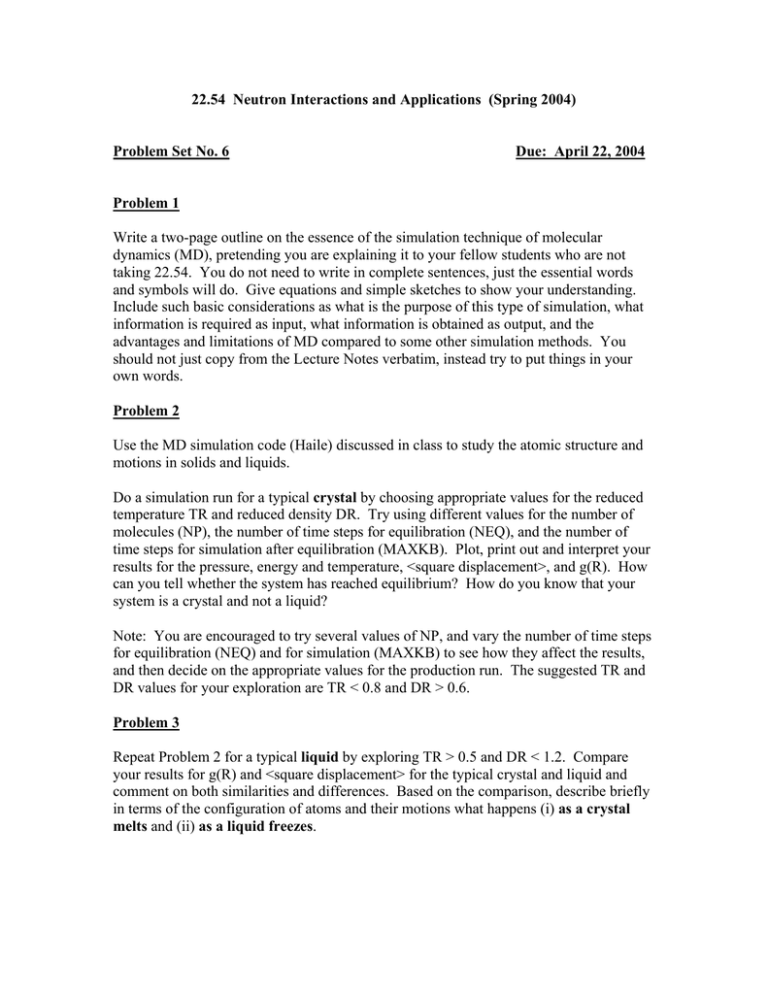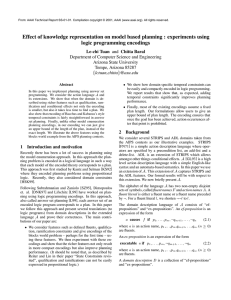22.54 Neutron Interactions and Applications (Spring 2004) Problem 1
advertisement

22.54 Neutron Interactions and Applications (Spring 2004) Problem Set No. 6 Due: April 22, 2004 Problem 1 Write a two-page outline on the essence of the simulation technique of molecular dynamics (MD), pretending you are explaining it to your fellow students who are not taking 22.54. You do not need to write in complete sentences, just the essential words and symbols will do. Give equations and simple sketches to show your understanding. Include such basic considerations as what is the purpose of this type of simulation, what information is required as input, what information is obtained as output, and the advantages and limitations of MD compared to some other simulation methods. You should not just copy from the Lecture Notes verbatim, instead try to put things in your own words. Problem 2 Use the MD simulation code (Haile) discussed in class to study the atomic structure and motions in solids and liquids. Do a simulation run for a typical crystal by choosing appropriate values for the reduced temperature TR and reduced density DR. Try using different values for the number of molecules (NP), the number of time steps for equilibration (NEQ), and the number of time steps for simulation after equilibration (MAXKB). Plot, print out and interpret your results for the pressure, energy and temperature, <square displacement>, and g(R). How can you tell whether the system has reached equilibrium? How do you know that your system is a crystal and not a liquid? Note: You are encouraged to try several values of NP, and vary the number of time steps for equilibration (NEQ) and for simulation (MAXKB) to see how they affect the results, and then decide on the appropriate values for the production run. The suggested TR and DR values for your exploration are TR < 0.8 and DR > 0.6. Problem 3 Repeat Problem 2 for a typical liquid by exploring TR > 0.5 and DR < 1.2. Compare your results for g(R) and <square displacement> for the typical crystal and liquid and comment on both similarities and differences. Based on the comparison, describe briefly in terms of the configuration of atoms and their motions what happens (i) as a crystal melts and (ii) as a liquid freezes.




